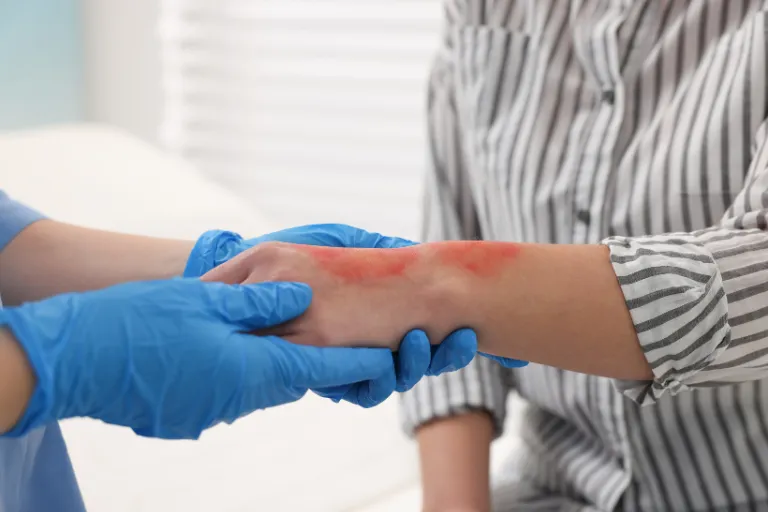Key Points
- Severe burns damage multiple skin layers and disrupt normal healing.
- Traditional therapies—like grafting—help but have limitations.
- Regenerative medicine introduces new solutions using stem cells, engineered skin, growth factors, and scaffolds.
- Early studies suggest these approaches may support faster healing and reduce scarring.
- Many regenerative tools are already used in burn centers, while others are still being studied.
A New Era Begins: How Regeneration Is Reshaping Burn Recovery
When someone experiences a deep burn, the injury is more than skin-deep—it destroys the body’s natural repair systems. For years, users relied mainly on grafts and wound care that, while lifesaving, often left behind significant scarring and slow recovery. Today, regenerative medicine is shifting the conversation.
Across burn units in the U.S., health professionals are using therapies once considered futuristic—bioengineered skin, stem cells, and advanced scaffolds—to help the body rebuild rather than simply cover a wound. Early studies show these solutions may support better long-term outcomes and restore function in ways traditional methods cannot [1].
Why Burn Healing Is So Complex—and Why Regeneration Matters
Burns are uniquely challenging injuries. Deep burns destroy the epidermis, dermis, and the stem cell “factories” that help the skin regrow. Without these structures, the body struggles to rebuild healthy tissue, leading to long healing times, scarring, and limited mobility.
Traditional grafting remains essential but comes with limits: donor skin shortages, pain, and functional and cosmetic challenges that can last a lifetime. Regenerative medicine aims to fill these gaps with innovations designed to support natural repair and healthier long-term skin quality [2].
What Happens Beneath the Surface: The Science of Burn Damage
To understand why regenerative therapies matter, it helps to look beneath the surface.
Severe burns disrupt:
- Skin architecture (collagen, elastin, hydration)
- Blood vessels, reducing oxygen to the wound
- Nerve endings, impacting sensation
- Stem cell niches, slowing natural regeneration
When these structures are lost, the body defaults to “scar formation” instead of true skin rebuilding. Regenerative medicine works to restore better tissue organization—reducing inflammation, improving blood flow, and encouraging healthier cell growth [3].
Regenerative Tools Changing Burn Care Today
Stem Cells: Tapping the Body’s Natural Repair System
Stem cells are one of the most promising tools in modern burn recovery.
Researchers study several types—including mesenchymal and adipose-derived stem cells—because early findings show they may help:
- Reduce inflammation
- Stimulate new collagen
- Support wound closure
- Improve long-term flexibility
Some therapies are being used experimentally, while others are progressing through regulatory pathways [4]. They are not a replacement for grafts but may help enhance healing when used alongside standard care.
Bioengineered Skin: Building a Better Barrier
Engineered skin substitutes are among the most widely adopted regenerative tools in burn centers. Products such as collagen-based matrices and biosynthetic dressings mimic the skin’s structure and support repair.
These substitutes may:
- Reduce pain
- Lower infection risk
- Support faster closure
- Decrease the need for donor skin
Some substitutes include living cells, giving them the ability to support real tissue integration over time [5].
Growth Factors: Guiding the Skin’s Recovery Signals
Growth factors act like “healing instructions” for the skin.
In burn care, growth factor therapies—such as PDGF, EGF, and FGF—are being studied for their ability to:
- Support new blood vessel formation
- Improve cell migration
- Promote more organized tissue repair
They are often delivered through sprays, gels, or dressings and are showing promising results in early wound-healing studies [6].
Tissue Scaffolds: A Framework for New Skin
Tissue scaffolds act as a supportive structure that allows new cells to grow in a healthy, organized pattern.
These scaffolds can be made from collagen, biodegradable polymers, or nanofiber meshes and may help:
- Maintain moisture
- Encourage new tissue growth
- Improve elasticity in healed skin
Advanced scaffolds infused with bioactive molecules are currently being studied for their potential to further enhance healing [7].
What’s on the Horizon: Innovations Shaping the Future
The world of regenerative burn care is expanding quickly. Tools under development include:
- 3D bioprinted skin with built-in blood vessels
- Spray-on skin cells for rapid coverage
- Gene-enhanced skin cells with improved resilience
- Smart dressings that release healing molecules gradually
While many of these are early-stage, they point toward a future where burn recovery is faster, more personalized, and less scarring than ever before.
How Users Can Explore These Options
If someone is considering regenerative solutions for burn care, the best next step is to speak with a health professional in a specialized burn center. They can explain which therapies are:
- Fully approved
- In routine use
- Still being studied
Regenerative medicine is often used alongside traditional therapies—not instead of them—to improve overall healing.
Conclusion
Regenerative medicine is transforming burn care, offering new tools to help rebuild skin structure, reduce scarring, and support healthier long-term outcomes. From engineered skin to stem cells and advanced scaffolds, these innovations are giving burn survivors more options and more hope than ever before.
As research continues, the future of burn care looks increasingly regenerative—focused not just on healing wounds, but helping the skin truly recover.
Medical Disclaimer:
This article does not in any way constitute medical advice. Please seek consultation with a licensed medical professional before starting any therapy. This website may receive commissions from links or products mentioned in this article.
Subscribe for Free for more insightful health articles tailored to your needs.
Sources
- Atiyeh, B. et al. (2005). Burn healing and tissue engineering. Annals of Burns and Fire Disasters.
- Rowan, M. P. et al. (2015). Burn wound healing and treatment. Journal of Trauma and Acute Care Surgery.
- Jeschke, M. G. (2009). Pathophysiology of burn injury. Clinical Plastic Surgery.
- Dash, N. R. et al. (2009). Stem cell therapy for burn wound healing. Indian Journal of Plastic Surgery.
- Shores, J. T. et al. (2007). Skin substitutes and tissue engineering. Clinical Plastic Surgery.
- Barrientos, S. et al. (2008). Growth factors in wound healing. Wound Repair and Regeneration.
- Maxson, S. et al. (2012). Tissue scaffolds in regenerative medicine. World Journal of Stem Cells.
Last Updated on November 21, 2025



